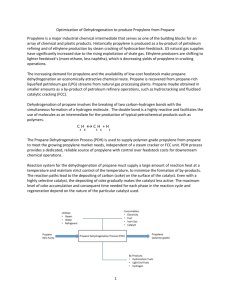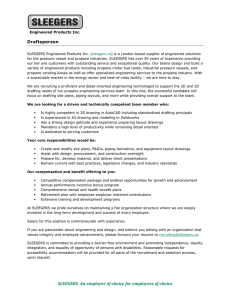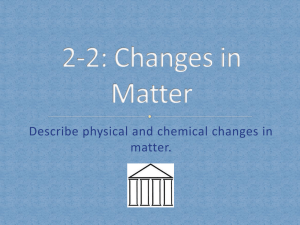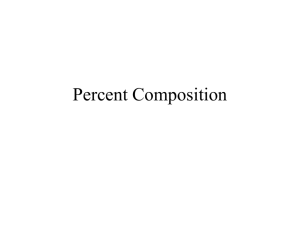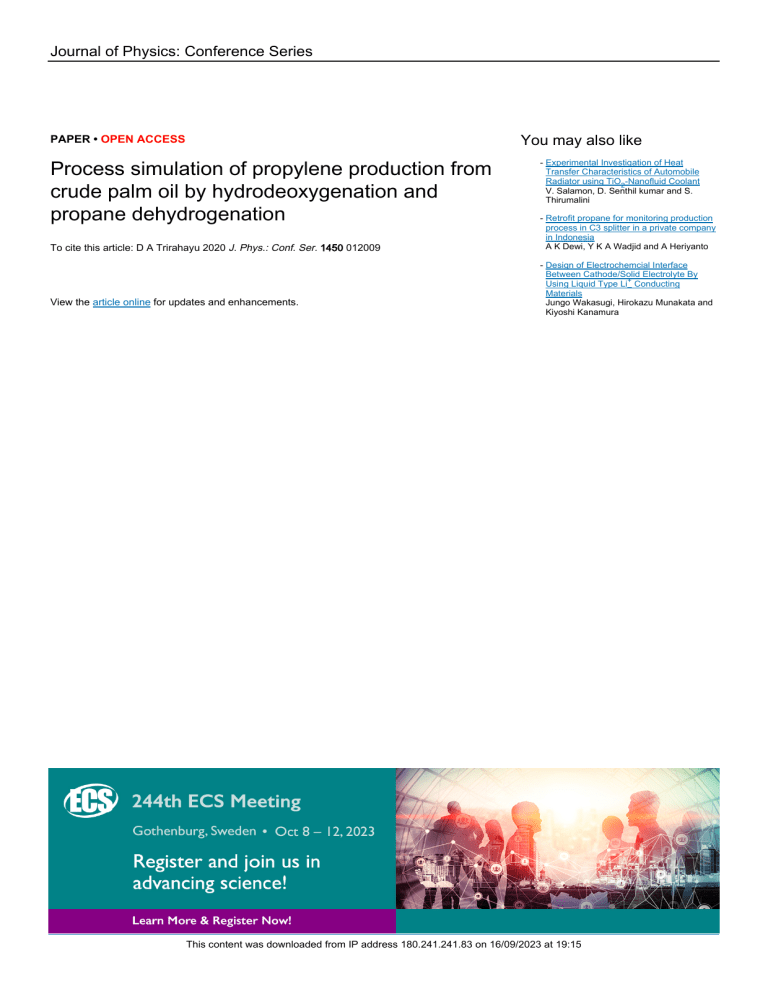
Journal of Physics: Conference Series You may also like PAPER • OPEN ACCESS Process simulation of propylene production from crude palm oil by hydrodeoxygenation and propane dehydrogenation To cite this article: D A Trirahayu 2020 J. Phys.: Conf. Ser. 1450 012009 View the article online for updates and enhancements. - Experimental Investigation of Heat Transfer Characteristics of Automobile Radiator using TiO2-Nanofluid Coolant V. Salamon, D. Senthil kumar and S. Thirumalini - Retrofit propane for monitoring production process in C3 splitter in a private company in Indonesia A K Dewi, Y K A Wadjid and A Heriyanto - Design of Electrochemcial Interface Between Cathode/Solid Electrolyte By Using Liquid Type Li+ Conducting Materials Jungo Wakasugi, Hirokazu Munakata and Kiyoshi Kanamura This content was downloaded from IP address 180.241.241.83 on 16/09/2023 at 19:15 iCAST-ES 2019 Journal of Physics: Conference Series 1450 (2020) 012009 IOP Publishing doi:10.1088/1742-6596/1450/1/012009 Process simulation of propylene production from crude palm oil by hydrodeoxygenation and propane dehydrogenation D A Trirahayu1 1 Chemical Engineering Department, Politeknik Negeri Bandung, Jalan Gegerkalong Hilir, Bandung, Indonesia E-mail: dhyna.analyes@gmail.com Abstract. The petrochemical industry is a branch of the chemical industry that utilizes raw materials in the form of oil and gas through chemical or physical processes to produce various olefin and aromatic-based industrial products. One of the key products in the petrochemical industry is propylene. Propylene is used for the manufacture of polypropylene resins, acrylic acids and its derivatives, propylene glycol, and others. Several attempts to produce propylene from other raw material sources such as natural gas and coal have been made, but given its non-renewable nature, there needs to be a solution for the utilization of renewable natural resources as raw material for making propylene. One of the potential renewable resources in Indonesia is CPO. The process of turning CPO into green diesel is known as the Hydrodeoxygenation (HDO) process. This process produces green diesel around 83 percent and propane around 5 percent. Propane produced can be converted into propylene by the Propane Dehydrogenation (PDH) process. The simulation process was designed using Aspen Hysys version 8.8. The simulation indicates that from 10.10 m^3/h CPO can be produced 10.73 m^3/h green diesel and 1.03 m^3/h propane with purity 99.85 percent. From propane dehydrogenation can be produced around 0.8 m^3/h propylene with purity 99.06 percent. 1. Introduction The petrochemical industry is a branch of the chemical industry that utilizes raw materials in the form of oil and gas through chemical or physical processes to produce various olefin and aromatic-based industrial products. The petrochemical industry has the characteristics of capital intensive, technology intensive and raw material / energy intensive. This industry has great prospects to be developed because of the large domestic and regional market potential, where most of the product supply is still limited, so that it is met from imports. One of the key products in the petrochemical industry is propylene. Propylene is used for the manufacture of polypropylene resins, acrylic acids and its derivatives, propylene glycol, and others. Currently propylene in Indonesia is obtained from naphtha cracking and imports. In the future, dependence on naphtha to produce propylene must be eliminated. So far, the petrochemical industry is 100% dependent on imported naphtha raw materials. Looking ahead, the petrochemical industry in Indonesia is very vulnerable to facing raw material difficulties. Several attempts to produce propylene from other raw material sources such as natural gas [1] and coal [2] have been made, but given its non-renewable nature, there needs to be a solution for the utilization of renewable natural resources as raw material for making propylene. One of the potential renewable resources in Indonesia is CPO [3]. Indonesia is one of the main producers of CPO in the world. CPO can be processed into various products such as cooking oil and Content from this work may be used under the terms of the Creative Commons Attribution 3.0 licence. Any further distribution of this work must maintain attribution to the author(s) and the title of the work, journal citation and DOI. Published under licence by IOP Publishing Ltd 1 iCAST-ES 2019 Journal of Physics: Conference Series 1450 (2020) 012009 IOP Publishing doi:10.1088/1742-6596/1450/1/012009 oleochemical derivatives [4]. Current technological developments allow converting CPO into synthetic diesel fuel which is often referred to as green diesel. Green diesel is different from biodiesel. In biodiesel, the chemical compound is a fatty acid ester with a methyl group (from methanol) or an ethyl group (from ethanol). On the other hand, green diesel is an aliphatic paraffin compound that is very similar to conventional diesel oil [5]. The process of turning CPO into green diesel is known as the Hydrodeoxygenation (HDO) process. This process produces green diesel around 83% and propane around 5% [6]. Propane produced can be converted into propylene by the Propane Dehydrogenation (PDH) process [7]. The existence of industrialization from this process will be very profitable because in addition to obtaining propylene for the raw material for the petrochemical industry, another product obtained is green diesel (an alternative to diesel). 2. Process description The process flow sheet was designed using Aspen Hysys version 8.8 is shown in Figure 1. The assumptions used as the basis for designing the process are as follows: • The CPO reaction process into hydrotreated biodiesel (BFD), propane and its by-products generally occur through three reactions namely the decarboxylation, decarbonization and hydrogenation reactions. • The conversion from CPO to its products is assumed to be 100% with selectivity to decarboxylation reactions of 22.82%, selectivity to decarbonization reactions of 28.51% and selectivity to hydrogenation reactions of 48.67%. • The propane to propylene reaction process is the main reaction that occurs in the propylene production reactor with propane conversion of 34% and propylene yield of 28.22%. • There is no heat loss on all propylene production process equipment. • The amount of compressive loss that occurs in the heat exchanger used is 1.5 psi. • The amount of pressure loss due to fluid flow in the pipe is assumed to be zero. • The amount of compressive loss in the CPO becomes propane production reactor at 0.1 bar. • The amount of compressive loss in the propane to propylene production reactor is 0.2 bar. Figure 1. Block Diagram Process Production Propylene from CPO. 2 iCAST-ES 2019 Journal of Physics: Conference Series 1450 (2020) 012009 IOP Publishing doi:10.1088/1742-6596/1450/1/012009 2.1. General description of the Hydrodeoxygenation Process One of the technologies used to upgrade bio-oil is catalytic hydrotreatment, one of which is the hydrodeoxygenation (HDO) process [8]. Hydrodeoxygenation reaction is a hydrogenolysis reaction which is still a derivative of the hydrogenation reaction. Hydrodeoxygenation reaction is the reaction of adding hydrogen to the reactants as well as removing oxygen to the reactants. Actually, the catalytic hydrotreatment process has an average operating condition with a very high temperature and pressure of > 150C and > 100 bar, as well as the hydrodeoxygenation reaction which uses an average temperature and high pressure. But there is a mild process of hydrodeoxygenation which is the reaction of hydrodeoxygenation using a temperature and pressure that is lower than the conditions normally used for the hydrodeoxygenation process. In the process of hydrodeoxygenation, catalyst and hydrogen are very necessary. Hydrodeoxygenation is a conversion process that provides maximum hydrocarbon yield stoichiometry, which is as much as 56-58% by weight of bio-oil. Hydrodeoxygenation consists of many reactions such as hydrogenation, cracking, and decarboxylation. The process of hydrodeoxygenation and decarboxylation/decarbonation take place simultaneously. The deoxygenation process using a decarboxylation reaction pathway can reduce H2 gas consumption by 60%, but it will produce a shorter carbon chain because each C atom on triglycerides will be reduced to COx. H2 gas consumption can be reduced by adding a sulphur component of 2000-5000 w-ppm, that make the selectivity of decarboxylation reaction increased. Hydrodeoxygenation or HDO is a process of saturating fatty acids as well as the process of removing oxygen in oil in the form of oxy groups released in the form of by-products, namely water and carbon dioxide, so that the main product is obtained in the form of long chain hydrocarbons or nalkanes. This HDO reaction involves three phases, namely the liquid phase (crude palm oil), the gas phase (H2), and the solid phase (catalyst, for example NiMo/γAl2O3). Because it involves these three phases, the appropriate reactor to use is a batch reactor. The operating temperature and pressure in the HDO process are relatively high at ± 360C and ± 60 bar. High pressure serves to increase the solubility of H2 gas in oil so that the reaction can run optimally. 2.2. General description of the Propane Dehydrogenation There are three stages to produced propylene from propane with the Catofin dehydrogenation process: raw material preparation stage, dehydrogenation reaction of propylene formation stage, and product purification stage [9]. Feed in the form of propane with a minimum purity of 95% was pre-treated before introduced into the reactor. Propane is stored in a saturated liquid state in a tubular tank at ambient temperature (30C) and a pressure of 12 atm. From the storage tank there is a valve to drain propane. After passing the valve the pressure is set to 1 atm so that the saturated liquid propane will condense into gas and can flow by itself. Propane gas then passed into the heat exchanger with counter current flow so that the temperature rises to 40C. After that propane is flowed into the furnace to get a temperature of 626.85C. A very high temperature increase causes an increase in propane feed pressure so that expanders are needed to reduce the pressure to 40 kPa to match the dehydrogenation unit. The dehydrogenation reactor used is a fixed bed multitube reactor with chromium oxide catalyst. This reactor operates at a temperature of 626.85C and a pressure of 40 kPa. The reactant enters through the top of the reactor which then enters the pipes in the reactor and contacts with the catalyst. The reaction is endothermic, so heat is needed to keep the reactor temperature stable. The heat is taken from the combustion of air which is useful in addition to supplying heat as well as to regenerate the catalyst because it can burn the crust on the catalyst so that the catalyst life can be longer. The product comes out in the form of propylene, hydrogen gas, propane and some light gases with still high temperatures so that the product is passed by the heat exchanger to be contacted with new propane raw materials in a counter current (opposite direction) to heat the raw material. The temperature of the product exiting the heat exchanger is 525.85C. After flow through the heat exchanger, the product is cooled using a cooler until it reaches a temperature of 30C (normal temperature). This is done to save energy used for the compression 3 iCAST-ES 2019 Journal of Physics: Conference Series IOP Publishing doi:10.1088/1742-6596/1450/1/012009 1450 (2020) 012009 process. After passing the cooler the product is compressed to reach a pressure of 4 atm using a 2stage compressor so that the gas can be flowed and controlled. After passing the compressor, the temperature of the product will rise again so that the product is passed back to the cooler reaching a temperature of 20C using refrigeration. After that, the product enters the Flash Tank with a pressure of 1 atm to separate the gas from the liquid. The top product from the Flash Tank goes to PSA to produce light gases such as hydrogen while the liquid product enters the de-ethanizer column to separate ethane. In the distillation column the operating conditions temperature of -60C with pressure 1 atm. The top product from the column will produce ethane while the bottom product will produce a mixture of propane and propylene. The mixture is passed through the second distillation column which is operated at -45C and 1 atm to obtain pure propylene. While the bottom result is recycled again as feed. 3. Results and discussion 3.1. Hydrodeoxygenation process The process flow diagram for this stage is shown in Figure 2 and simulation result with Hysys is shown in Figure 3. The simulation was carried using NRTL-Ideal as fluid package. The CPO was represented using three hypothetical components which named triglyceride1 (38.38%), triglyceride2 (14.46%), and triglyceride3 (47,26%). The ratio of CPO: Hydrogen volumetric flow was set 1: 728. Most of the hydrogen is recycled with volumetric flow of hydrogen make up is 55.61 m3/h and CPO feed are 10.10 m3/h. The process of CPO conversion into propane is carried out at Propane Reactor (R-101) at a temperature of 300 C and a pressure of 30 bar. To achieve these operating conditions hydrogen is compressed through a three-stage compressor namely C-101, C-102 and C-103 followed by a cooling process at each stage of compression through the heat exchanger E-102 and E-103. At the R-101 reactor a 100% CPO conversion process occurs with a selectivity of decarboxylation reaction of 22.82%, selectivity to decarbonylating reaction of 28.51% and selectivity of hydrogenation reaction of 48.67%. The catalyst used in this reactor is the catalyst Ni (C0) -Mo / γAl2O3. 1 2 3 4 P-101 CPO Pump A 5 HE-101 CPO Heater R-101 Propane Reactor 6 V-101 De-pressurized Valve 7 HE-102 Product Heater 8 S-101 Flash Separator 1 9 HE-103 Top Product Cooler 10 B 11 V-102 De-pressurized Valve 12 13 HE-104 Hydrogen Cooler A P-95 HE-103 13 2 12 P-73 CPO from Storage tank 10 M-101 Membrane Separation 15 B V-102 1 HE-104 HE-101 P-101 19 3 C M-101 9 17 V-101 14 HE-102 I-70 M-102 S-101 R-101 D Propana C 8 7 D 20 P-71 Hydrogen from Storage tank 4 5 Side Product 11 6 S-101 E E 18 C-101 Liquid Product HBD to Storage F F 16 C-101 Three Stage Hydrogen Compressor G S-102 Flash Separator 2 M-102 Membrane Separation V-102 De-pressurized Valve V-102 Flow Splitter Valve G Figure 2. Process Flow Diagram CPO to Propane. PROJECT : PRODUKSI PROPILEN DARI CPO H H TITLE : PRODUKSI PROPANA DARI CPO SECTION I 1 2 3 4 5 6 7 8 4 9 10 DRAWING NO. 11 SHEET 12 REV. 13 I iCAST-ES 2019 Journal of Physics: Conference Series 1450 (2020) 012009 IOP Publishing doi:10.1088/1742-6596/1450/1/012009 Figure 3 CPO to Propane simulation result. The output product of the gas-phase R-101 reactor then enters the S-101 two-phase separator with a pressure drop process through the V-101 valve and cooling through the E-104 heat exchanger to a pressure of 14.71 bar and a temperature of 40C. In the S-101 separator a liquid product was separated, consisting mostly of green diesel (10.73 m3/h) with little water impurities. The top product output of the S-101 separator is a gas fluid with the main composition being hydrogen followed by water vapor, propane, CO and CO2. Furthermore, the S-101 output gas is flowed into the M-101 membrane before it is preceded by a heating process with an E-104 heat exchanger to a temperature of 90C. In the M-101 membrane hydrogen is separated from other gases to be fed back as reactants to the R-101 reactor. Other gas products are separated through the S-102 separator with liquid products in the form of water and the top products are gas components with constituents in the form of water vapor, propane, CO2 and CO. The gas component is then separated to produce propane with a purity content of 99.85% through the M-102 membrane and flow 1.03 m3/h. 3.2. Propane Dehydrogenation The process flow diagram for this stage is shown in Figure 4 and simulation result with Hysys is shown in Figure 5. After propane is successfully produced from CPO, propane is processed into propylene through a dehydrogenation process. The dehydrogenation process of propane to propylene is carried out at the R-201 reactor at a temperature of 600C at atmospheric pressure. The reactions that occur in this process including the side reactions are as follows: (1) (2) (3) (4) The Equation (1) reaction is the main desired reaction. In this process the conversion of propane is 34% with propylene yield of 28.22%. The catalyst used is Pt-Sn/γ-Al2O3 [10]. To increase the temperature of propane before entering the R-201 reactor HE-202 heat exchanger is used and to increase the temperature of hydrogen HE-201 heat exchanger is used. The product of reactor R-201 is a gas phase containing propane, propylene, hydrogen, ethylene, ethane and methane. Hydrogen is a 5 iCAST-ES 2019 Journal of Physics: Conference Series IOP Publishing doi:10.1088/1742-6596/1450/1/012009 1450 (2020) 012009 compound that is quite a lot, so it needs to be separated. Hydrogen separation is carried out through an M-201 membrane unit at 102°C and 14 bars. The increase in gas pressure is carried out through three stages of compression with units C-203, C-204 and C-205 with the cooling process using HE-203 and HE-204 heat exchangers. 1 2 3 4 P-101 CPO Pump A 5 HE-101 CPO Heater R-101 Propane Reactor 6 V-101 De-pressurized Valve 7 HE-102 Product Heater 8 S-101 Flash Separator 1 9 HE-103 Top Product Cooler 10 B 2 CPO from Storage tank 10 M-101 Membrane Separation 11 V-102 De-pressurized Valve 13 HE-104 Hydrogen Cooler A P-95 HE-103 13 12 P-73 12 15 B V-102 1 HE-104 HE-101 P-101 19 3 C M-101 9 7 17 V-101 14 HE-102 I-70 S-101 R-101 D Propana C 8 M-102 D 20 P-71 Hydrogen from Storage tank 4 5 Side Product 11 6 S-101 E E 18 C-101 Liquid Product HBD to Storage F F 16 G C-101 Three Stage Hydrogen Compressor S-102 Flash Separator 2 M-102 Membrane Separation V-102 De-pressurized Valve V-102 Flow Splitter Valve Figure 4. Process Flow Diagram Propane to Propylene. PROJECT : PRODUKSI PROPILEN DARI CPO H I G The M-201 membrane output hydrogen is fed back as R-201 reactor feed. The TITLE : membrane output PRODUKSI PROPANA DARI CPO gas which still contains propane, propylene, ethylene, ethane and methane is fed to the TC-201 DRAWING REV. SHEET distillation column to separate the propane component as a product under theSECTION distillation column. NO. Before the distillation process is carried out, the feed is cooling with HE-206 heat exchanger. Propane 1 2 3 4 5 6 7 8 9 10 11 12 13 separation is based on the largest amount of gas entering the TC-201 distillation column. The bottom product TC-201 is propane with a purity of 99.85% which is then fed back to enter the R-201 reactor. The TC-201 top product is fed to the TC-202 distillation column to produce pure propylene which was previously compressed and cooled through a C-206 compressor and HE-207 heat exchanger. The purification process of propylene is carried out on TC-202 which produces propylene in the bottom product with a purity of 99.06% and flow 0.8 m3/h. The top product is a gas that still contains ethylene, ethane and methane. Figure 5. Propane to Propylene simulation result. 6 H I iCAST-ES 2019 Journal of Physics: Conference Series 1450 (2020) 012009 IOP Publishing doi:10.1088/1742-6596/1450/1/012009 4. Conclusions CPO can be potential renewable resources in Indonesia to produce propylene. There are two process to produce propylene from CPO, hydrodeoxygenation and propane dehydrogenation. The simulation indicates that from around 10.10 m3/h CPO can be produced 10.73 m3/h green diesel and 1.03 m3/h propane with purity 99.85% via hydrodeoxygenation. From propane dehydrogenation can be produced around 0.8 m3/h propylene with purity 99.06%. 5. References [1] Treger Y A, Rozanov V N, Sokolova S V and Murashova O P 2012 Catalysis in Industry 4 231–235 [2] Xiang D, Qian Y, Man Y and Yang S 2014 Applied Energy 113 639-647 [3] Ray A 2013 Journal of Oil Palm & The Environment 4 22-38 [4] Ahmad F B, Zhang Z, Doherty W O S and O'Hara I M 2019 Renewable and Sustainable Energy Reviews 109 386-411 [5] Casas L, Castillo E F, Torres J A and Aldemar M 2011 Ecopetrol [6] Duan H et al. 2017 Nature Communications 8 591 1-10 [7] Sahebdelfar S and Zangeneh F T 2010 Iranian Journal of Chemical Engineering 7 2 [8] Srifa A, Faungnawakij K, Itthibenchapong V, Viriya-empikul N, Charinpanitkul T and Assabumrungrat S 2014 Bioresource Technology 158 81-90 [9] Maddah H A 2018 American Scientific Research Journal for Engineering, Technology, and Sciences 45 49-63 [10] Farjoo A, Khorasheh F, Niknaddaf S and Soltani M 2011 Chemistry and Chemical Engineering 18 458–464 7
